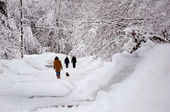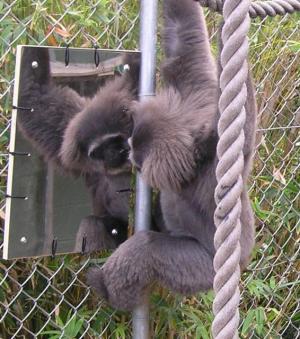
© Jose Leiva/Sun JournalElaine Asselin of Lewiston walks her dog Zoe down Novella St. early Monday morning after the storm among the snow laden trees and power lines.
National Weather Service meteorologist Eric Schwibs says Sunday's snowstorm was the season's "highest impact event in terms of damage" because the snow was wet and heavy.
"It caused quite a bit of damage to the power grid as far as outages," Schwibs said. "I was driving home last night watching the transformers blow."
There were some impressive snowfall totals, with Livermore Falls topping out at 21 inches, Turner at 19 and Lewiston-Auburn saw 15½. Winds blowing at 35 to 40 miles per hour made the storm feel and look worse.
"This was a classic track for a snowstorm like this for us. The only real difference was the wetness and the heaviness of the snow," NWS meteorologist Jim Hayes said. "This one was more like what we'd normally see in mid to late March."
Power outages added to people's sense of frustration. Gail Rice, spokeswoman for Central Maine Power Co., said the total number of customers without power was just over 130,000 at 11 a.m. Monday; 11,000 of those customers were in the Twin Cities and surrounding area.
"The highest concentration of outages were for customers out of our Brunswick service station," Rice said.
Crystal St. Hilaire of Minot was without power from Sunday night until 2:30 p.m. Monday. She said she was equally frustrated by having no power as she was by having to clear the snow.

